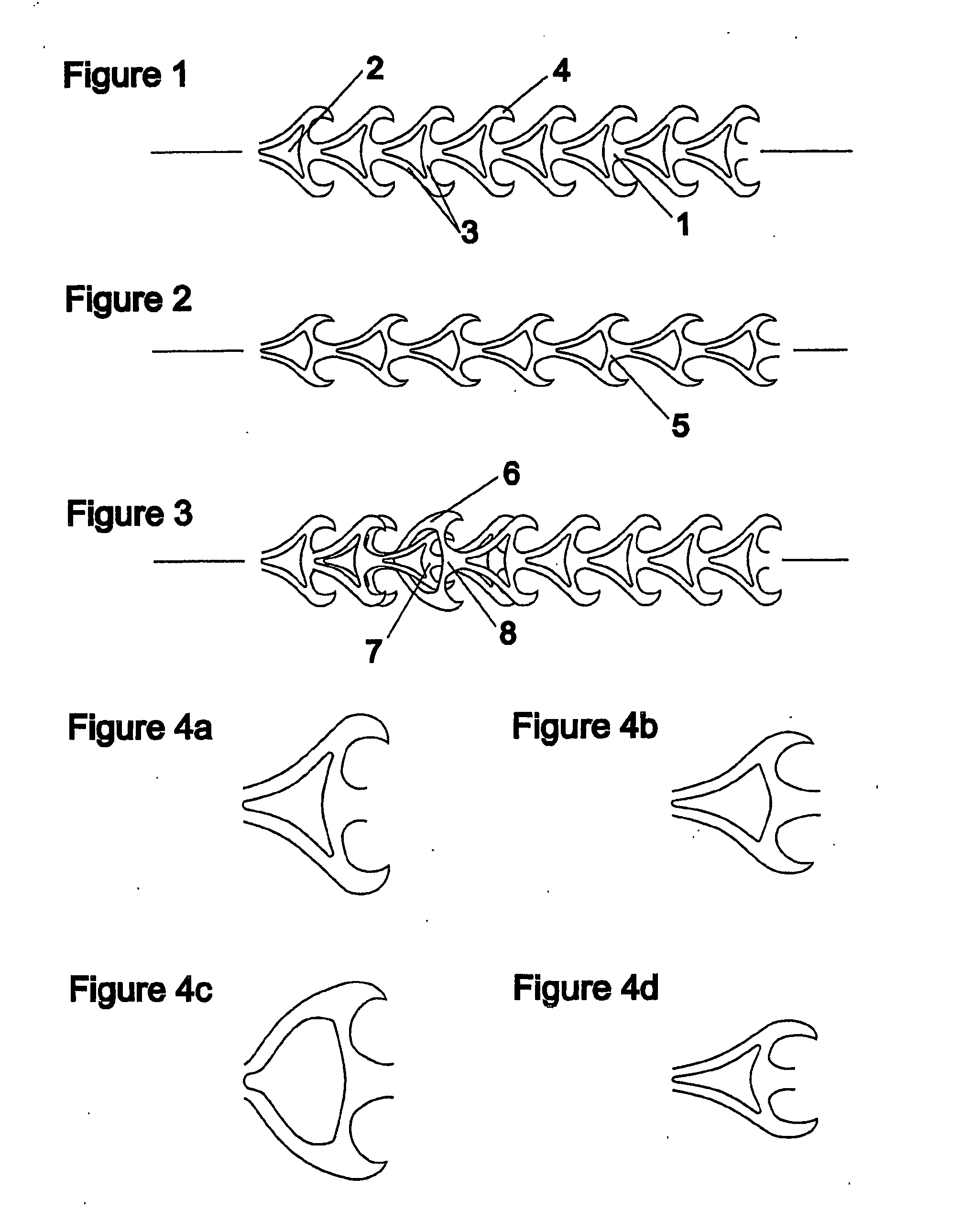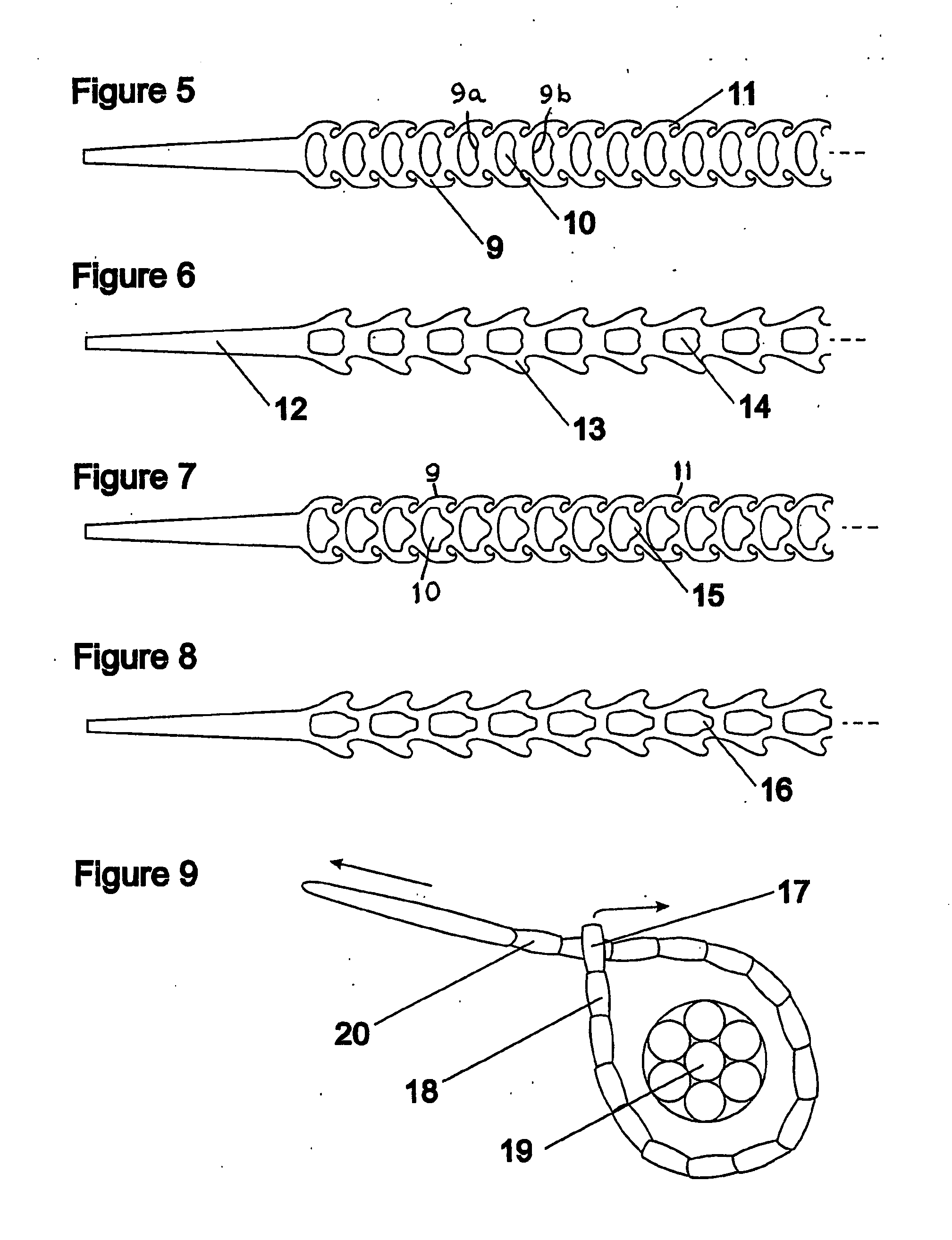Tie strips
a tie-dye technology, applied in the field of tie-dye strips, can solve the problems of constrictive nature of conventional tie-dye strips, waste of tail portion pulled through the head during fitting, and inability to perform functions,
- Summary
- Abstract
- Description
- Claims
- Application Information
AI Technical Summary
Benefits of technology
Problems solved by technology
Method used
Image
Examples
Embodiment Construction
[0053]FIG. 1 portrays a portion of waste-free tie strip in a relaxed state 1 according to existing designs (e.g. prior art U.S. Pat. No. 5,799,376) in which an aperture 2 is bounded by inwardly curved wall portions 3, extending from which are latching members 4.
[0054] When longitudinal tension is applied, the rear wall of each cell bends outwards 5 and the strip generally contracts transversely and extends longitudinally, as shown in FIG. 2.
[0055] The side wall members are also able to bend outwards 6 and this occurs during the insertion of one cell 7 into another 8 (FIG. 3). It is to be noted that in this design the inserted (penetrant) cell 7 generally contracts laterally whereas the penetrated cell 8 generally expands laterally.
[0056] Subsequent to successful penetration of one cell though another, the wall portions return to an inwardly pointing state and the latching members of the inserted cell serve to prevent its withdrawal.
[0057] The full range of two-dimensional cellul...
PUM
| Property | Measurement | Unit |
|---|---|---|
| tensile strength | aaaaa | aaaaa |
| tear strength | aaaaa | aaaaa |
| thick | aaaaa | aaaaa |
Abstract
Description
Claims
Application Information
 Login to View More
Login to View More - R&D
- Intellectual Property
- Life Sciences
- Materials
- Tech Scout
- Unparalleled Data Quality
- Higher Quality Content
- 60% Fewer Hallucinations
Browse by: Latest US Patents, China's latest patents, Technical Efficacy Thesaurus, Application Domain, Technology Topic, Popular Technical Reports.
© 2025 PatSnap. All rights reserved.Legal|Privacy policy|Modern Slavery Act Transparency Statement|Sitemap|About US| Contact US: help@patsnap.com



